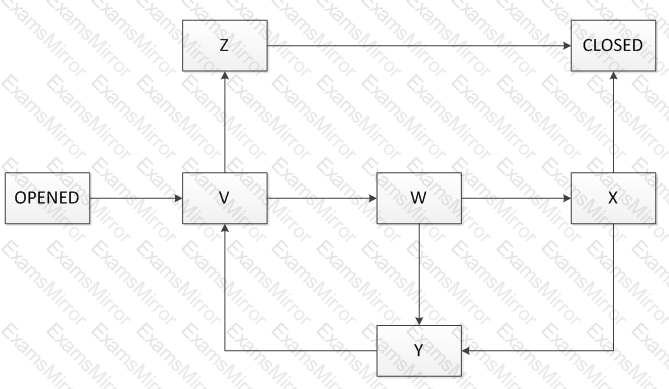Cyber Monday Special Limited Time 70% Discount Offer - Ends in 0d 00h 00m 00s - Coupon code = getmirror
Pass the BCS Test Manager TM12 Questions and answers with ExamsMirror
Exam TM12 Premium Access
View all detail and faqs for the TM12 exam
637 Students Passed
91% Average Score
98% Same Questions
Improving the Testing Process
Which of the following statements about the STEP test process improvement model is true?
Number of correctresponses: 1
K21 credit
Improving the Testing Process
Which of the following statements about the TMMi test process improvement model is true?
Number of correct responses: 1
K21 credit
Improving the Testing Process
Consider the following statements describing the importance of improving the test process:
I. Test process improvement is important because being focused only on the test process it can provide recommendations to improve the test process itself, but it can’t indicate or suggest improvement to areas of the development process
II. Test process improvement is important because it is much more effective than software process improvement to improve the quality of a software system
III. Test process improvement is important because severalprocess improvement models (STEP, TPI Next, TMMi) have been developed over the years
IV. Test process improvement is important because every organization, regardless of the context, should always achieve the maximum level of maturity of testing described in the test improvement models such as TMMi
Which of the following answers is correct?
Number of correct responses: 1
K21 credit
Test Tools and Automation
Assume you are a Test Manager involved in system testing of a CRM application for a Pay-TV company. Currently the application is able to support a proper number of users assuring the required responsiveness. Since the business is expected to grow, you have been asked to evaluate the ability of the application to grow to support more users while maintaining the same responsiveness.
Which of the following tools would you expect to be the most useful at performing this evaluation?
Number of correct responses: 1
K21 credit
Test Tools and Automation
Assume you are managing a test automation project for a mission-critical system.
Becausevendor provided tools and open source solutions don't meet the needs of this project, you ask your test team to develop a custom automation framework.
Which of the following management issues associated to the development of this custom automation framework is least likely to manage?
Number of correct responses: 1
K21 credit
Test Tools and Automation
Assume you are the Test Manager in chargeof independent testing for avionics applications.
You are in charge of testing for a project to implement three different CSCI (Computer Software Configuration Item):
- a BOOT-X CSCI that must be certified at level B of the DO-178B standard
- a DIAG-X CSCI that must be certified at level C of the DO-178B standard
- a DRIV-X CSCI that must be certified at level A of the DO-178B standard
These are three different software modules written in C language to run on a specific hardware platform.
You have beenasked to select a single code coverage tool to perform the mandatory code coverage measurements, in order to meet the structural coverage criteria prescribed by the DO-178B standard. This tool must be qualified as a verification tool under DO-178B.
Since there are significant budget constraints to purchase this tool, you are evaluating an open-source tool that is able to provide different types of code coverage. This tool meets perfectly your technical needs in terms of the programming language and thespecific hardware platform (it supports also the specific C-compiler).
The source code of the tool is available.
Your team could easily customize the tool to meet the project needs. This tool is not qualified as a verification tool under the DO-178B.
Which of the following are the three main concerns related to that open-source tool selection?
Number of correct responses: 3
K43 credits (2 credits out of 3 credits correct, 1 credit point)
DefectManagement
Which of the following information would you expect to be the most useful to perform a defect clustering analysis?
Number of correct responses: 1
K21 credit
Defect Management
Assume you are working on a defect management process to be used by a software organization to track the current status of the defects reports for several projects.
When a defect is found for investigation a defect report is created in “Opened” state that is the unique initial state. The defect report status has also a unique finale state that is the “Closed” state.
The following state transition diagram describes the states of thisdefect management process:

where only the initial (“Opened”) and final (“Closed”) states are indicated while the remaining states (V, W, X, Y, Z) have yet to be named.
Which of the following assignments would you expect to best complete the defect management process?
Number of correct responses: 1
K32 credits
Defect Management
During the system testing phase a tester from your test team observes a failure in the system under test and he/she decides to create an incident report. The incident report is currently in a “new” state, indicating it needs to be investigated.
Which THREE of the following information items can’t yet be present in the incident report?
Number of correct responses: 3
K32 credits (2 credits out of 3 credits correct, 1 credit point)
Test Management
Assume you are currently working on a project developing a system where functional requirements are very well specified. Unfortunately non-functional requirements do almost not exist.
You are the Test Manager. You have to choose a technique for test selection that allows testing of non-functional characteristics, especially reliability.
Which of the following techniques for test selection do youexpect being most useful in this scenario?
Number of correct responses: 1
K21 credit
TOP CODES
Top selling exam codes in the certification world, popular, in demand and updated to help you pass on the first try.
